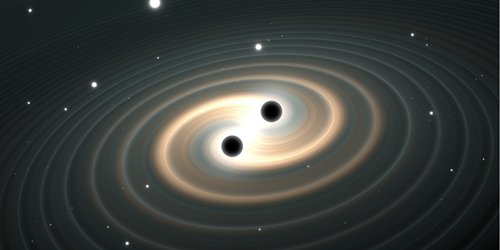Mini Interferometers Offer Impressive Sensitivity
The first direct observation of gravitational waves seven years ago sparked a revolution in astronomy and cosmology (see Viewpoint: The First Sounds of Merging Black Holes). Since then, scientists have been looking for innovative ways to improve gravitational-wave detectors. Now Jiri Smetana at the University of Birmingham, UK, and his colleagues have demonstrated a compact sensor that could increase the sensitivity of these detectors to some gravitational-wave signals [1]. The device’s versatility also gives it potential applications in other areas of precision metrology.
Gravitational waves are detected by measuring minuscule changes—as small as one ten-thousandth of a proton diameter—in the path lengths of a pair of laser beams. These observations depend on precisely determining displacements of objects ranging from gram-scale optics to kilogram-scale test masses. Smetana and colleagues’ sensor can measure such displacements using a pair of centimeter-sized laser interferometers, developed by the company SmarAct, together with a method called deep frequency modulation. Unlike existing interferometric sensors, the team’s device has subpicometer displacement sensitivity even for low-frequency displacements. Moreover, its assembly from commercially available components and its small footprint give it significant advantages over the custom-made devices currently used.
Smetana and colleagues suggest that their sensor could replace existing devices in gravitational-wave detectors with limited impact on the existing infrastructure. Doing so would improve the sensitivity of these detectors to gravitational waves produced from black hole mergers involving intermediate-mass black holes—those between 100 and 100,000 times the mass of the Sun. The researchers also say that their sensor might improve other experiments that require highly precise displacement measurements. Such experiments include those involving torsion balances—instruments that can be used to probe fundamental physics—or commercial seismometers.
–Ryan Wilkinson
Ryan Wilkinson is a Corresponding Editor for Physics Magazine based in Durham, UK.
References
- J. Smetana et al., “Compact Michelson interferometers with subpicometer sensitivity,” Phys. Rev. Appl. 18, 034040 (2022).




